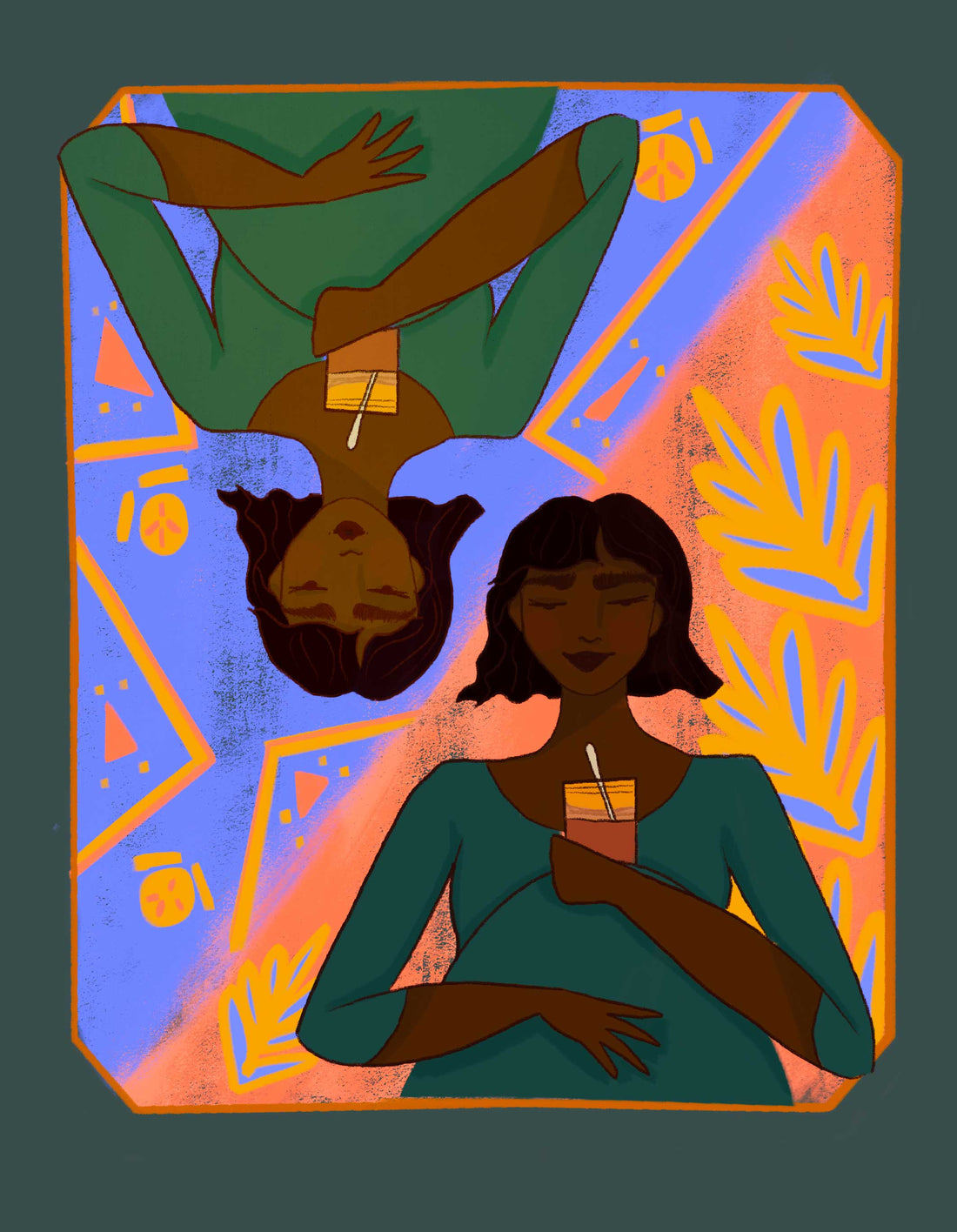Every now and then I’ll set up a Little Fortunes booth at a craft fair or local merchant market as a way to promote the game (and hopefully sell a few). It was at one of these markets that a pregnant couple asked if I had a version of the game that “predicted” twins. I explained that, unfortunately, Little Fortunes does not mention much about twins. As I thought back on my research for the game, I was surprised that I didn’t often encounter the topic of twins and multiple births.
Although the current version of Little Fortunes does not deal with multiple babies, the couple’s question highlighted the need for an expansion pack specifically for those future mamas expecting twins! I continue to keep this idea in my back pocket. Until the time comes to release such an expansion pack, I’ve included here, some myths and old wives’ tales about where twins come from.
To the couple from the craft fair, thank you for bringing the idea to my attention!
Look to the Heavens
Roman mathematician and astronomer Claudius Ptolemy looked to the skies and theorized that twins were a byproduct of the location of the stars and the order of the planets. To conceive twins, Ptolemy believed that at least one of the two luminaries (i.e. the sun and the moon) must be passing over or be in the same spot in the night sky as one of the four double-bodied or bicorporeal zodiac constellations (i.e. Gemini, Virgo, Sagittarius, or Pisces). Twins, for Ptolemy, become all the more likely when the planet that rules the bicorporeal sign--Mercury for Gemini and Virgo, Jupiter for Sagittarius, and Neptune for Pisces--was also in the mix and maintained the same position as the luminary and the applicable zodiac constellation.
While it was the placement of the stars for Ptolemy that determined if a pregnant person was carrying multiple babies, it was the order of the planets that decided their sex. In Book III of Tetrabiblos, Ptolemy skips right past twins, and to the betterment or not of the soon to be overwhelmed future parents, assumes there to be triplets in the mama’s belly. For Ptolemy, when Saturn, Jupiter and Mars cross over multiple constellations, the three babies will be boys. If Venus, Mercury, and the Moon are all apparent in the night sky, then the babies are girls. If the heavens present a mixture of Saturn, Jupiter, and Venus or Venus, Mars, and the Moon, then the parents can expect an assortment of both boys and girls.

Source: Ptolemy, Claudius. “Tetrabiblos” Book III Translator Frank Egleston Robbins, Loeb Classical Library, Harvard University Press, 1940. Accessed via the University of Chicago, LacusCurtis Scholarly Encyclopedia
Want to go again?
Early theories of where twins come from seem to fall into one of two main schools of thought: either the twins are a byproduct of a single sexual encounter in which the “mixture of the seeds of both sexes” divides and starts to develop two babies in different parts of the womb, or a byproduct of multiple sexual encounters (and thus multiple “seeds”) when the female partner was already pregnant.
Mary Sharp, the self-identified “old wife” from the seventeenth century, throws her lot with the second school of thought. She debunks the theory held by both Hippocrates and Aristotle that twins are conceived at the same time or as a result of the same sexual encounter, explaining that a woman’s womb is simply too small to allow for the “mingling of the man and woman’s seed together in two places at the same time.”
Instead, Sharp attests that a woman can conceive a second time as a result of having sex while pregnant, and thus end up with multiple babies. Sharp seems to be a proponent of the wisdom credited to the legendary Greek figure Hermes Trismegistus found in the Treaties of Hermes and the Hermetica that twins are not conceived at the same time. Sharp uses two sources of logic to defend her theory. First, if twins were conceived at the same time during the same sexual encounter, then the babies would both need to come out of their mother at the same exact second, something Sharp notes is impossible. Her second piece of evidence is based on the permeability of the womb throughout pregnancy. For Sharp, because the womb is not tightly shut during pregnancy, it is only reasonable that it could be susceptible to newly introduced “seed” from multiple sexual encounters.

Source: Sharp, Jane. “The Midwives Book, or, The Whole Art of Midwifery Discovered: Directing Childbearing Women How to Behave Themselves in their Conception, Breeding, Bearing, and Nursing of Children in Six Books.” Book I and II p. 70, 71, 95. 1671 accessed via The University of Michigan Library, Early English Books Online, Text Creation Partnership (EEBO/TCP);
The Lustful and Vilified Woman
In the Little Fortunes game, each of the 13 interactive pregnancy “tests” are accompanied with historical context to explain to players where the applicable pregnancy myth comes from and why it persists. A common theme woven throughout this historical context is the vilification of women as impure, immoral, and evil.
This historical mistreatment of women, unfortunately, once again rears its ugly head when researching ancient beliefs concerning twins. For Sharp, endorsing the idea in the Hermetica that twins are conceived at different times begs the question, for her, as to why would an already pregnant woman want to continue to have sex. That’s an easy answer for Sharp; it can only be tied to a woman’s “inordinate” and sinful “lust” that manifests from the Garden of Eden, Eve, and the “original sin.” Here, Sharp brings in the Ancient Greek and Roman term “superfetation”--where a woman becomes pregnant again while already pregnant. The term, however, seems to have a negative connotation, placing shame on women who are sexually active, alluding to cultural impropriety and immoral excess.
The vilification of women who bare twins does not end with multiple, lustful sexual encounters. As mentioned above, Aristotle, in general, believed that twins are conceived at the same time. In an article by Swiss archaeologist and Classics Professor Veronique Dasen, Dasen relays that Aristotle does at times break from this theory, and believes in a rare phenomenon of twins conceived at different times as a result of a pregnant woman having sex with different partners within a short timeframe. For Aristotle, examples of this “phenomenon” are typically cases of adultery, which often result in one of the twins looking like the mother’s proper spouse and the other looking like her lover.
Aristotle’s deviation from the theory that twins are conceived at the same time may be an attempt to address some of the burning questions of his day. Due to the lack of an understanding as to the existence of fraternal twins, Aristotle’s suggestion of adultery fed into ancient popular belief as how twins could look different from one another. In addition, Aristotle often associated twins with unexplained physical deformities, theorizing that multiple babies “hamper each other’s being brought to perfection.” Later on, Roman author Pliny the Elder would associate multiple births with food shortages and famine.

Source: Dasen, Veronique. “Becoming Human: From Embryo to the Newborn Child.” The Oxford Handbook of Childhood and Education in the Classical World. 2013. Accessed via the Oxford Handbooks Online.

